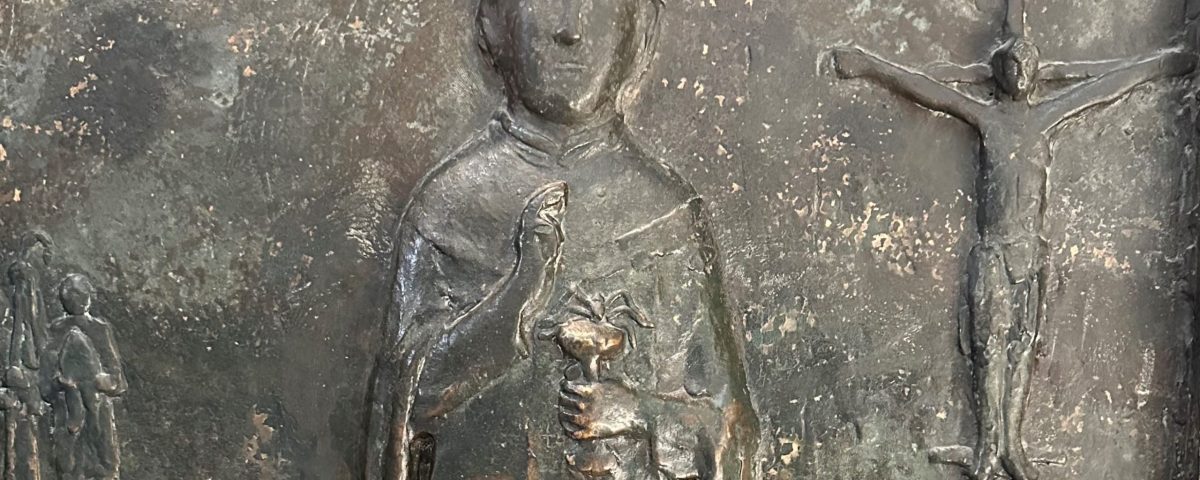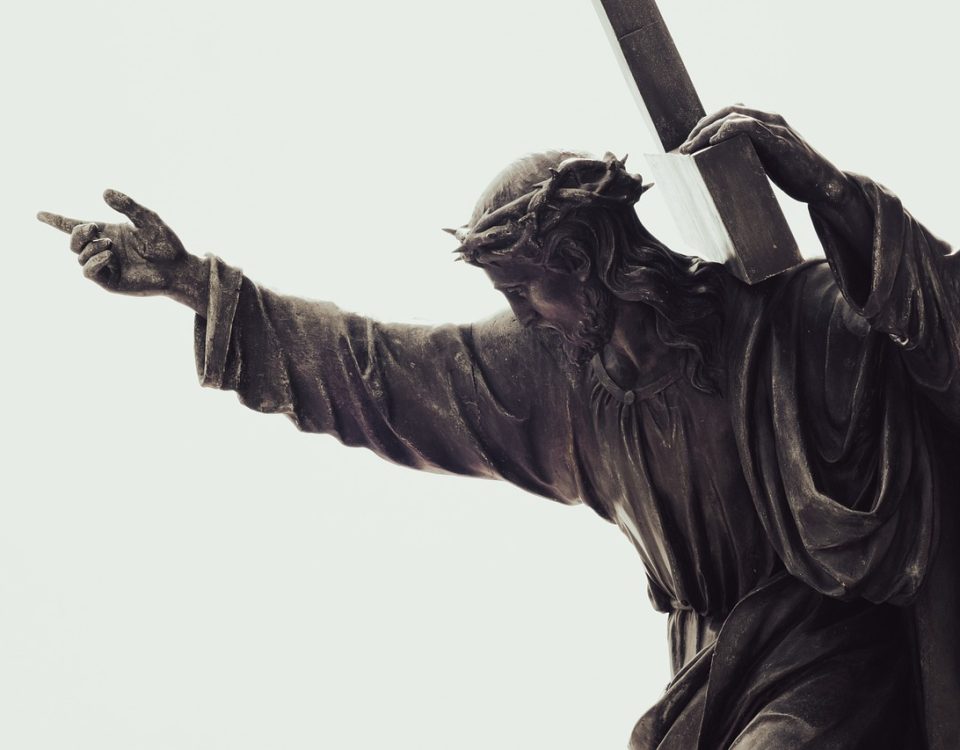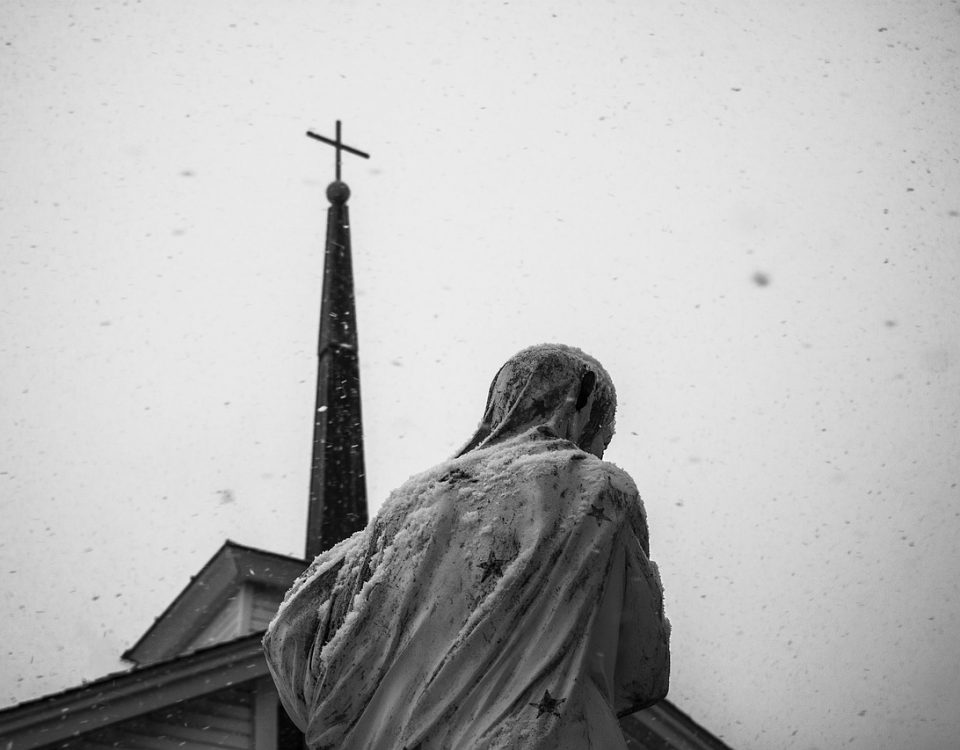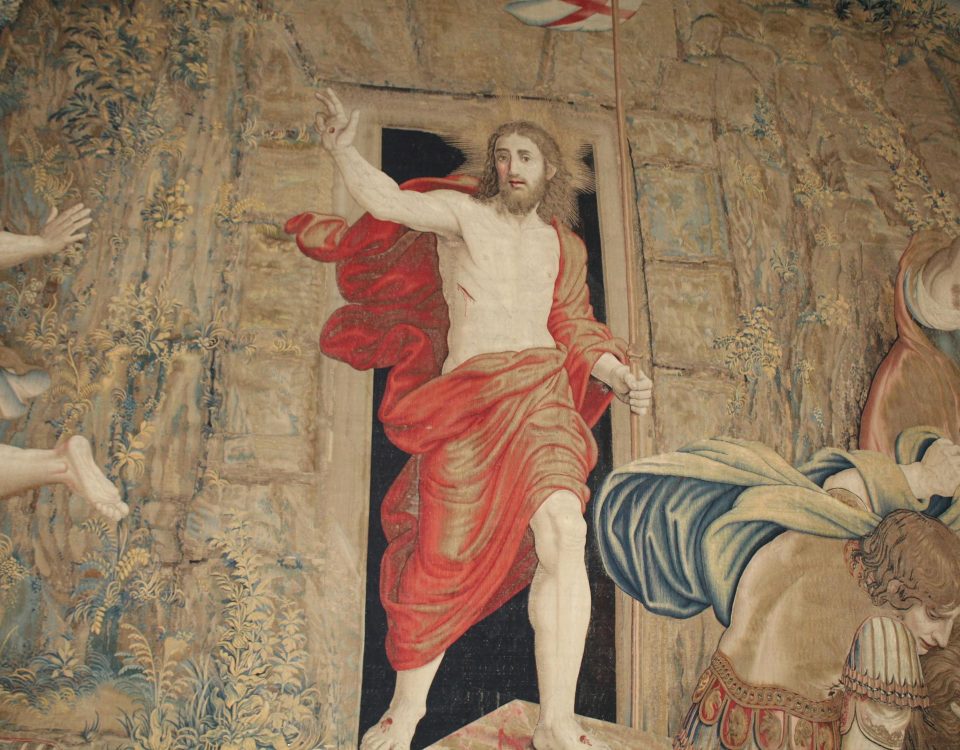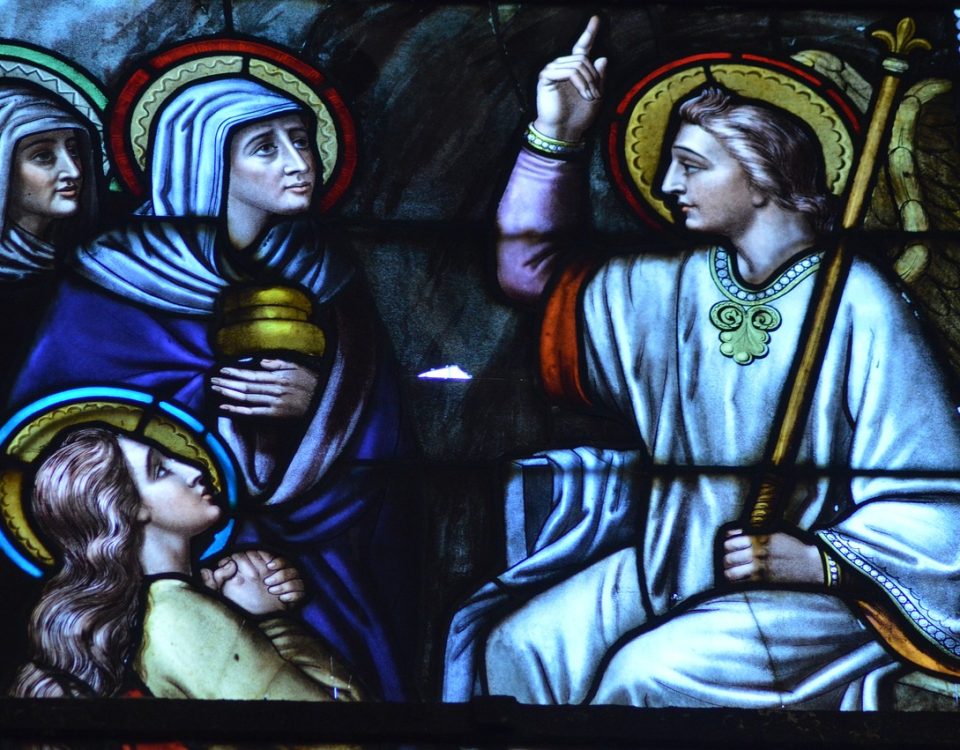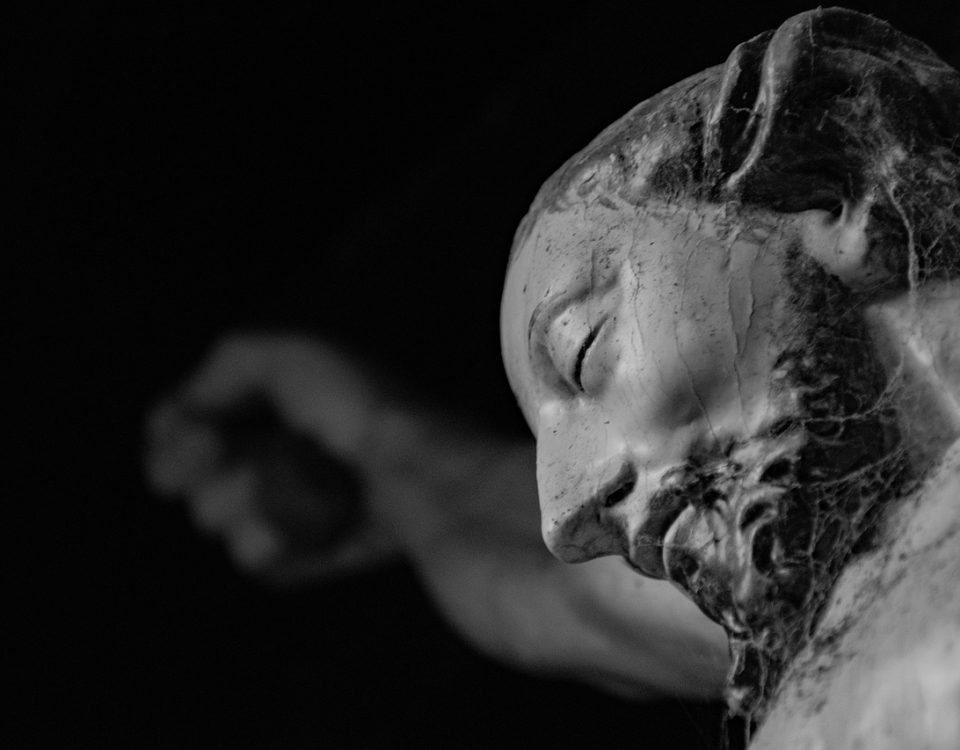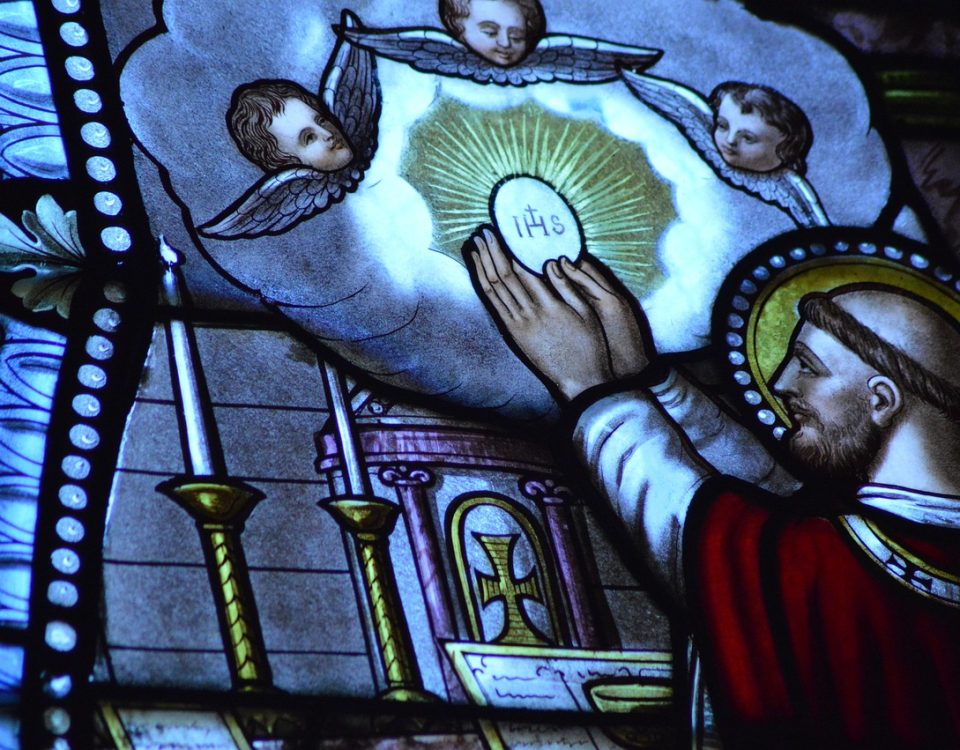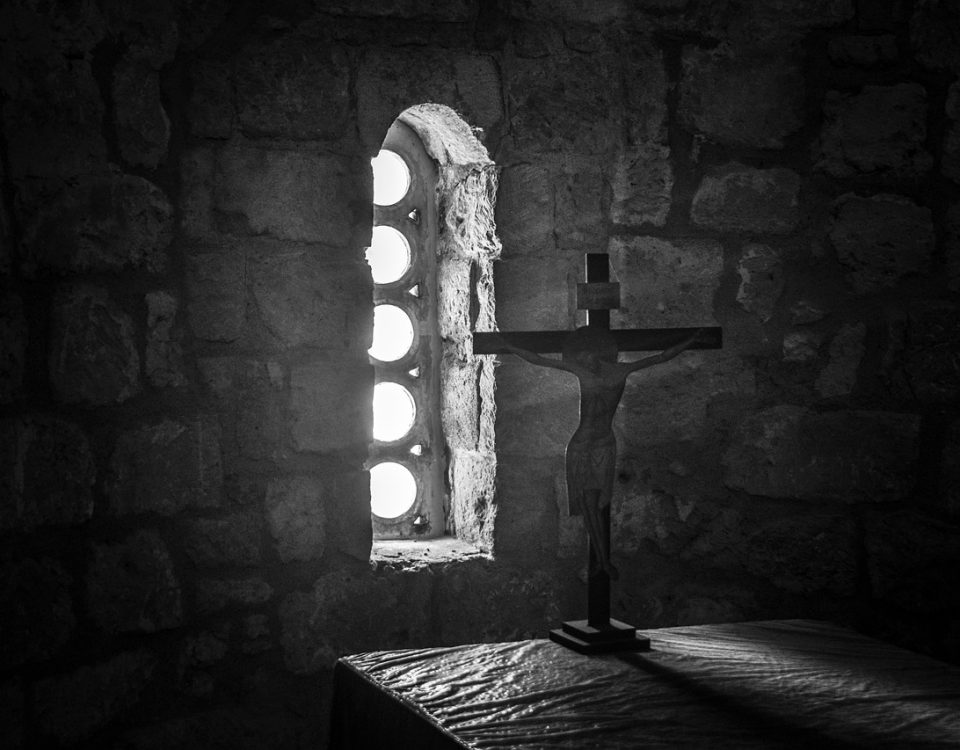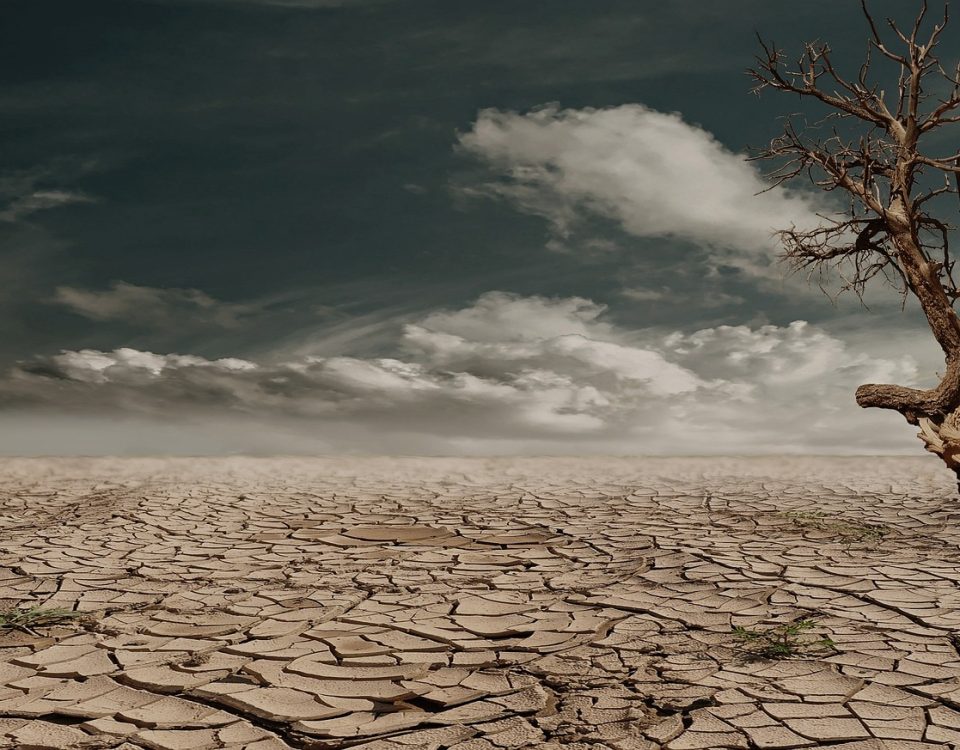We tell ourselves we’re rational, that we don’t buy into any of that stuff—the visions, the dreams, the mysteries of the departed, our loved dead.
We think ourselves sophisticated thinking ourselves above it, evolved beyond the superstitions of our ancestors. We imagine a cosmos clean and calculable, colder too but at least without the foolishness of mystery. We call ourselves enlightened; and, of course, what that means is we can’t help but feel that between the living and the dead is an unbridgeable distance; it means we can’t help but feel alone, that the dead are gone forever. That’s just one of the side effects of a world without mystery—loneliness. And we feel it the most, most painfully, when a person we’ve loved has died. This is that absence many of you feel tonight; it’s what brought you here, probably, and given you tears—the pain of such loss and not really knowing what to do about it, we lonely sophisticates.
But we haven’t always been this way, always so coldly materialist, allergic to mystery. In fact, in human history, when you consider the span of it, we are the strange ones. Our ancestors were closer to the dead, more intimate with the mystery of it. What we consider the odd fringes, they paid it more respect. They knew, even though it was at times dangerous, that there was some enduring communion the living shared with the dead.
And sometimes, as I said, some would dangerously look into it. Just a century ago, for example, in the years after the Great War, countless people sought to contact those they’d lost in the war. Trying to make sense of so much death, people sought ways to communicate with the dead. Sir Arthur Conan Doyle, for instance—the great creator of the great rationalist, Sherlock Holmes, after he lost his son in the war (and several others in his family) he spent the rest of his life in séance after séance, tragically trying to recover the lives and the love he’d lost. Millions of people did the same.[1]
And, of course, the Church rightly opposed such attempts to communicate with the dead like that; it is a sin. But even within the parameters of orthodox Christianity, for most of history, there has been a humble openness to the mysteries of the dead. It’s part of what it means to be human to want to know, to touch, to speak with those who’ve died. Saul, for instance, the king: he desperately wanted the deceased prophet, Samuel, to appear to him; he sinfully sought out a medium to bring it about.[2] St. Perpetua, not sinfully, was given a vision of her little brother, Dinocrates; he was just seven when he died. She was given a vision of his healed wounds, seeing he was alright; she thanked God for that vision.[3] St. Gregory Nyssa wrote about the “shadowy shapes of the departed” that some see near the tombs of the dead.[4] One ancient story from Egypt, I like: it’s of a monk who had a vision of his brother burning neck-deep in a lake of fire, suffering the torments of hell; so the monk prayed to God for at least a little relief for his brother; anything he could do, the monk asked God. The next dream he had, the monk saw his brother, this time a little elevated, a little more out of the fire than he was the time before. And the tormented brother was grateful, for he said to the monk, his brother that had prayed for him: “Thanks to your prayers I am standing on the head of a bishop.”[5]
Catholic Christianity is a wilder thing than we’ve tamed it to be. What I’m trying to say is that when it comes to the living’s communion with the dead, Shakespeare was right to say that there are more things in heaven and on earth than are dreamt of in our philosophy.[6] We are closer to the dead than we realize; our communion with those we love is a real communion. And the thing is, what I’m trying to say, is that that’s what brings us here tonight, to this altar—our love for those we’ve lost and the sense that we belong to them and they to us, even now in mystery, no matter our foolish modern pretensions to be smarter than that. We stand here very close to those we love, close because of this altar and the sacrament we celebrate upon it. Besides the cold scientistic banishment of mystery and the sad superstitions of seances and spiritualism is the truth of the Catholic faith, the communion of saints, the holy souls of purgatory, and the Christ that connects us all. Here is where you are closest to those you love—this altar and wherever else Jesus Christ is to be found. Here is where you are no longer alone, but instead very close—in Christ with those we’ve lost and love still.
And it’s beautiful. Again, I can’t help but remember the visions our ancestors used to have. I remember one medieval story that preachers used to tell: of a pilgrim on his deathbed, afraid to let go. God sent his angels to console him, but even that wouldn’t do. And so, God decided to send David, the great musical king himself, to the man’s side, to play him the music of heaven. “Then the pilgrim’s soul,” the ancient story goes, “hearing the sweet sound, left his body with joy and delight.”[7] The music called him. Heaven is beautiful, you see; our mourning is a sadness that is healed by an unending divine beauty. Our tears on this earth will give way, all tears of ours shall be dried by God himself.[8]
Unspeakable beauty. Like another old story, I can’t even remember where I read it, of angels carrying a soul to heaven; silent, the angels, all of them but one. The angel at the head of the procession was speaking in a language no one knew, a language only the holiest mystics could hear but not understand. The soul goes to beauty. Heaven is not like earth; it’s different. Again, heaven is beautiful, and it’s so beautiful, we can’t even conceive it; we can’t understand it at all. We stand here tonight—and this is the point I’m trying to make—we stand here on the shore of eternity; we’re about to taste heaven in Christ in the sacrament. And that’s the closest we can get, at least on this earth, to those we love—those who now know a beauty we can’t even fathom, those to whom we’re bound in prayer; as we pray for them so that they in turn, purified by God, will pray for us. In this communion of all souls, those we name and those we whisper, you and me. Amen.
[1] Jay Winter, Sites of Memory, Sites of Mourning, 58-61
[2] 1 Samuel 28:3-14
[3] The Martyrdom of Saints Perpetua and Felicitas 7
[4] Gregory of Nyssa, On the Soul and Resurrection 6
[5] John Moschos, The Spiritual Meadow 44
[6] Shakespeare, Hamlet 1.5, 165-166
[7] Jacques de Vitry, The Exempla 132
[8] Isaiah 25:8
© 2023 Rev. Joshua J. Whitfield
